#spy satellite
Explore tagged Tumblr posts
Text


“EXTRAVEHICULAR ACTIVITY IN SPACE - Protected by life support equipment, two crewman maneuver in space. One crewman, wearing a Garrett/AiResearch chestpack and tethered with its umbilical life-line, performs inspection of the Gemini spacecraft. The other crewman returns from a photographic surveillance mission; he wears a Garrett/AiResearch integrated maneuvering system.”
Artwork by Garrett Ad
Date: December 1965
Mike Acs's Collection: link
Posted on Flickr by Drew Granston: link
#Manned Orbiting Laboratory#MOL#Space Station#Spy Satellite#Gemini B#Gemini Capsule#Project Gemini#Gemini Program#Spacewalk#earth#Space#1965#concept art#United States Air Force#U.S. Air Force#US Air Force#USAF#December#my post
62 notes
·
View notes
Text
North Korea to increase satellite launches and reinforce military on border
North Korea warned on Monday it would continue to launch satellites while its troops were rebuilding some demolished security posts on the border with South Korea, Reuters reported.
The Foreign Office stated that last week’s launch of the reconnaissance satellite was motivated by the need to monitor the United States and its allies.
It is a legal and just way to exercise its right to defend itself and thoroughly respond to and precisely monitor the serious military action by the US and its followers.
North Korea announced on Tuesday that the satellite had successfully entered orbit and transmitted photos.
Read more HERE

#world news#world politics#news#north korea news#north korea#dprk#kim jong un#south korea#spy satellite#border crossings#border security#borderlands#border crisis#military
2 notes
·
View notes
Text
But they were limited to putting spy satellites into low Earth orbit. It wasn't as if there was anything farther out in space that people could any longer be scared
— For years I've had a recurrent nightmare of waking up and seeing the headlines that the Russians had landed on the Moon and declared the Lunar Soviet.
into racing to defend. Submarines offered a much better way of keeping nuclear weapons safe from sneak attacks than squirreling them away on the Moon.
"The Moon: A History for the Future" - Oliver Morton
#book quotes#the moon#oliver morton#nonfiction#spy satellite#spying#satellite#orbit#earth#space#nightmare#russia#newspaper headlines#submarine#nuclear weapons
0 notes
Text
makes gay little spy satellite noises at u
0 notes
Text
UK Launches New Spy - in - the - Satellite
By Olivia Christie Published: 06:38 EDT, 17 August 2024 | Updated: 06:50 EDT, 17 August 2024 A new ‘spy-in-the-sky’ satellite has been launched into space by the UK military to help keep an eye on the nation’s enemies. Named Tyche, it is UK Space Command’s first satellite that can capture daytime images and videos of the Earth’s surface and will support the country’s military operations. It…

View On WordPress
0 notes
Link
India’s space agency, the Indian Space Research Organisation (ISRO), demonstrated its mettle on August 23, 2023, when it successfully landed Chandrayaan-3 on the Moon’s south pole, becoming the world’s fourth and first successful lunar landing. Subsequently, India emerged as the second nation globally to launch Aditya L1 into periodic Halo orbit for sun research.
India also despatched Mangalyan to Mars on its first attempt, and it was successful even before these Moon and Sun missions. India has also been successful in launching over 100 satellites.
0 notes
Text
North Korea Claims New Spy Satellite Captures Images of South Korean and U.S. Bases
Read the latest news about North Korea's alleged successful launch of a military spy satellite, which reportedly captured images of key targets in South Korea and the United States.
1 note
·
View note
Text
North Korea spy satellite launch fails as rocket falls into sea due to 'serious defects'
The South Korean military said it was salvaging an object presumed to be part of the crashed North Korean rocket in waters 200 kilometers (125 miles) west of the southwestern island of Eocheongdo.
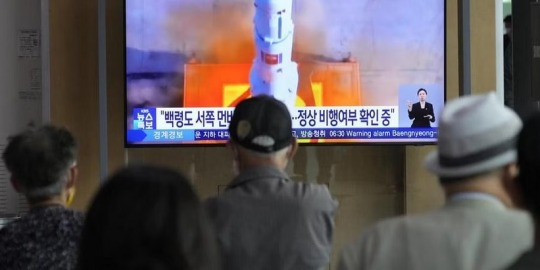
SEOUL: North Korea’s attempt to put its first spy satellite into space failed Wednesday in a setback to leader Kim Jong Un’s push to boost his military capabilities as tensions with the United States and South Korea rise.
After an unusually quick admission of failure, North Korea vowed to conduct a second launch after it learns what went wrong. It suggests Kim remains determined to expand his weapons arsenal and apply more pressure on Washington and Seoul while diplomacy is stalled.
South Korea and Japan briefly urged residents to take shelter after the launch.
The South Korean military said it was salvaging an object presumed to be part of the crashed North Korean rocket in waters 200 kilometers (125 miles) west of the southwestern island of Eocheongdo. Later, the Defense Ministry released photos of a white, metal cylinder it described as a suspected rocket part.
A satellite launch by North Korea is a violation of U.N. Security Council resolutions that ban the country from conducting any launch based on ballistic technology. Observers say North Korea’s previous satellite launches helped improve its long-range missile technology. North Korean long-range missile tests in recent years demonstrated a potential to reach all of the continental U.S., but outside experts say the North still has some work to do to develop functioning nuclear missiles.
The newly developed Chollima-1 rocket was launched at 6:37 a.m. at the North’s Sohae Satellite Launching Ground in the northwest, carrying the Malligyong-1 satellite. The rocket crashed off the Korean Peninsula’s western coast after it lost thrust following the separation of its first and second stages, the North’s official Korean Central News Agency said.
South Korea’s military said the rocket had “an abnormal flight” before it fell in the water. Japanese Chief Cabinet Secretary Hirokazu Matsuno told reporters that no object was believed to have reached space.
North Korean media said the country’s space agency will investigate what it calls “the serious defects revealed” by the launch and conduct a second launch as soon as possible.
“It is impressive when the North Korean regime actually admits failure, but it would be difficult to hide the fact of a satellite launch failure internationally, and the regime will likely offer a different narrative domestically,” said Leif-Eric Easley, a professor at Ewha University in Seoul. “This outcome also suggests that Pyongyang may stage another provocation soon, in part to make up for today’s setback.”
Adam Hodge, a spokesperson at the U.S. National Security Council, said in a statement that Washington strongly condemns the North Korean launch because it used banned ballistic missile technology, raised tensions and risked destabilizing security in the region and beyond.
The U.N. imposed economic sanctions on North Korea over its previous satellite and ballistic missile launches but has not responded to recent tests because China and Russia, permanent Security Council members now locked in confrontations with the U.S., have blocked attempts to toughen the sanctions.
Seoul’s military said it boosted military readiness in coordination with the United States, and Japan said it was prepared to respond to any emergency. The U.S. said it will take all necessary measures to ensure the security of the American homeland and the defense of South Korea and Japan.
South Korea's capital, Seoul, issued alerts over public loudspeakers and cellphone text messages telling residents to prepare for evacuation after the launch was detected, and Japan activated a missile warning system for Okinawa prefecture in southwestern Japan, in the rocket’s suspected path.
“Please evacuate into buildings or underground,” the Japanese alert said.
Japanese Defense Minister Yasukazu Hamada said Japan plans to keep missile defense systems deployed in its southern islands and in southwestern waters until June 11, the end of North Korea’s announced launch window.
KCNA didn’t provide details of the rocket or the satellite beyond their names. Experts earlier said North Korea would likely use a liquid-fueled rocket as most of its previously tested long-range rockets and missiles have done.
Though it plans a fuller investigation, the North’s National Aerospace Development Administration attributed the failure to “the low reliability and stability of the new-type engine system applied to (the) carrier rocket” and “the unstable character of the fuel,” according to KCNA.
On Tuesday, Ri Pyong Chol, a top North Korean official, said the North needs a space-based reconnaissance system to counter escalating security threats from South Korea and the United States.
However, the spy satellite shown earlier in the country’s state-run media didn’t appear to be sophisticated enough to produce high-resolution imagery. Some outside experts said it may be able to detect troop movements and large targets such as warships and warplanes.
Recent commercial satellite imagery of the North’s Sohae launch center showed active construction indicating North Korea plans to launch more than one satellite. In his Tuesday statement, Ri also said North Korea would test “various reconnaissance means" to monitor moves by the United States and its allies in real time.
With three to five spy satellites, North Korea could build a space-based surveillance system that allows it to monitor the Korean Peninsula in near real-time, according to Lee Choon Geun, an honorary research fellow at South Korea’s Science and Technology Policy Institute.
The satellite is one of several high-tech weapons systems that Kim has publicly vowed to introduce. Other weapons on his wish list include a multi-warhead missile, a nuclear submarine, a solid-propellant intercontinental ballistic missile and a hypersonic missile. In his visit to the space agency in mid-May, Kim emphasized the strategic significance of a spy satellite in North Korea’s standoff with the United States and South Korea.
Easley, the professor, said Kim likely increased pressure on his scientists and engineers to launch the spy satellite after rival South Korea successfully launched its first commercial-grade satellite aboard its domestically built Nuri rocket earlier this month.
South Korea is expected to launch its first spy satellite later this year, and analysts say Kim likely wants his country to launch its spy satellite before the South to reinforce his military credentials at home.
After repeated failures, North Korea successfully put its first satellite into orbit in 2012 and a second one in 2016. The government said both are Earth observation satellites launched under its peaceful space development program, but many foreign experts believe both were developed to spy on rivals.
Observers say there has been no evidence that the satellites have ever transmitted imagery back to North Korea.
0 notes
Text



little lonely sparkle in the evening sky, who are you?
#not a star cuz it’s really cloudy today#not the moon cuz it’s a different type of light and also not the night (just winter in the north hence the dark sky)#not a plane cuz it’s not flying in any direction fast enough just blinking up there#probably a satellite tbh#or … A SPY#but i’m feeling so lonely atm that thinking it’s an alien saying hi is comforting ngl#anyway#p
13 notes
·
View notes
Text
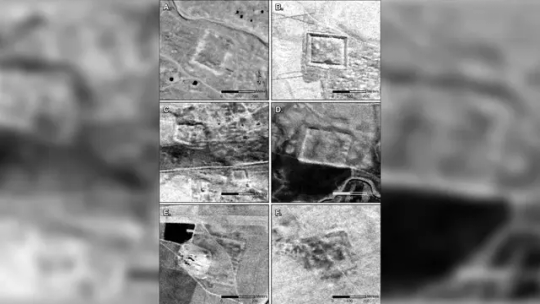
Spy Satellite Photos Reveal Hundreds of Long-Lost Roman Forts
Declassified photos captured by United States spy satellites launched during the Cold War have revealed an archaeological treasure trove: hundreds of previously unknown Roman-era forts, in what is now Iraq and Syria.
Many of those long-lost structures may be gone forever at this point, destroyed or damaged over recent decades due to agricultural expansion, urban development and war. Nevertheless, the discovery of the forts’ existence challenges a popular hypothesis established in the 1930s about the role of such fortifications along the ancient Roman Empire’s eastern border, researchers reported Wednesday in the journal Antiquity.
Based on the satellite views, the high number of forts and their widespread distribution hints that the forts may not have been erected to keep enemies out, as the decades-old theory suggested. Rather, the structures were likely built to ensure safe passage for caravans and travelers along routes that saw plenty of nonmilitary traffic. These forts, according to the study authors, were outposts and havens, not hostile barriers.
High-resolution images analyzed in the new study were taken during flyovers by multiple satellites belonging to two US military programs: the Corona Project (1960 to 1972) and Hexagon (1971 to 1986). Corona’s images were declassified in 1995, and Hexagon’s photos were released to the public in 2011.
Images from Hexagon and Corona are invaluable for archaeologists because they preserve snapshots of landscapes that have since undergone significant disruption, said lead study author Jesse Casana, an archaeologist and professor in the department of anthropology at Dartmouth College in New Hampshire.
“Agriculture and urbanization have destroyed a lot of archaeological sites and features to a shocking degree,” Casana said. “This old imagery allows us to see things that are often either obscured or no longer extant today.”
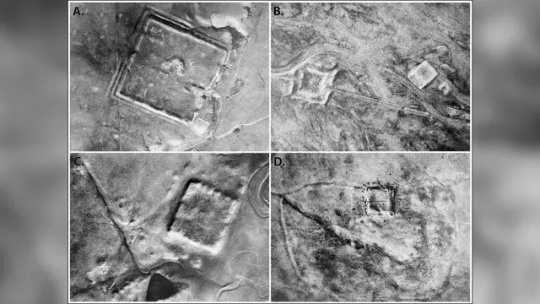
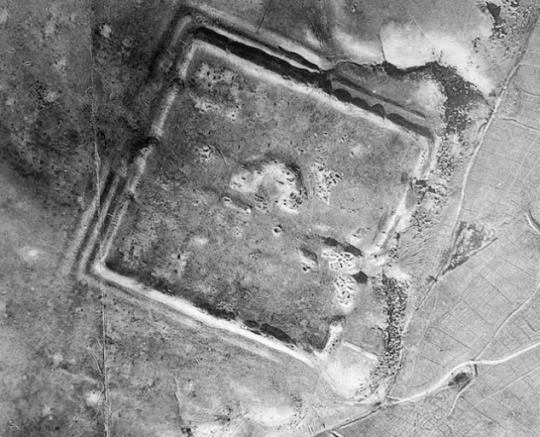
Spy satellite photos vs. the Poidebard survey
Satellite images are especially helpful for searches across the northern part of the Fertile Crescent in the Middle East — from the eastern coast of the Mediterranean to western Iran — because of the area’s archaeological importance and high visibility of the ground in photos, Casana added.
The research team pored over the images for signs of Roman forts, which have a distinctive square shape and walls that usually measure about 164 to 262 feet (50 to 80 meters) long. The scientists began their search using reference maps from an aerial survey of the region conducted in the 1920s and 1930s by French archaeologist and Jesuit missionary Father Antoine Poidebard. That survey was among the first to photograph archaeological sites from the air, and in 1934 Poidebard reported finding 116 Roman forts.
It was an unprecedented achievement. But nearly a century later, mapping Poidebard’s forts to satellite photos was challenging. Because his map wasn’t large-scale, it contained numerous spatial errors, Casana said. Poidebard also did not provide names or numbers for most of the forts he found, identifying them instead by their proximity to geologic features.
Those forts were aligned north to south along what was once the easternmost boundary of the Roman Empire, according to Poidebard. This arrangement, he claimed, was surely intended to guard against invaders from the east.
But Poidebard’s survey provided only a partial view of Rome’s ancient infrastructure, the researchers found. What he overlooked — and what the satellite photos revealed — was that the north-to-south line of 116 forts was actually only a narrow sliver of a cluster spreading from east to west and containing 396 fortified structures.
The forts spanned approximately 116,000 square miles (300,000 square kilometers), “extending from Mosul, on the Tigris River in Iraq, through Ninawa province, across the Khabur and the Balikh valleys, continuing to the semi-arid plains west of the Euphrates River, leading to western Syria and the Mediterranean,” according to the study.

Oases of safety for ancient Rome
When the archaeologists performed a second survey of an image subset, they found 106 more fortlike structures, hinting that further investigations will yield many more Roman forts. Based on excavations of other Roman sites in the region, the scientists estimated that the forts were built between the second and sixth centuries.
While Poidebard’s row of forts along the Roman Empire’s eastern front looked like a military fortification, this new evidence suggested that the forts collectively served a different purpose. Rather than presenting an impassable wall on a violent frontier, they provided oases of safety and order along well-traveled Roman roads.
Borders in this world “were places of dynamic cultural exchange and movement of goods and ideas,” not barriers, Casana said. And perhaps that perspective holds a lesson for the modern era, he added.
“Historically, as an archaeologist, I can say that there have been many attempts by ancient states to build walls across borders and it has been a universal failure,” Casana said. “If there’s any way that archaeology contributes to modern discourse, I would hope it is that building giant walls to keep people out is a bad plan.”
By Mindy Weisberger.


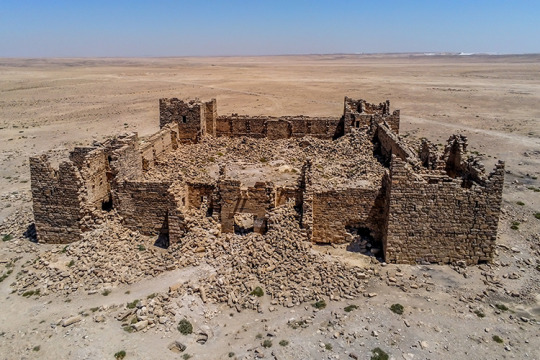
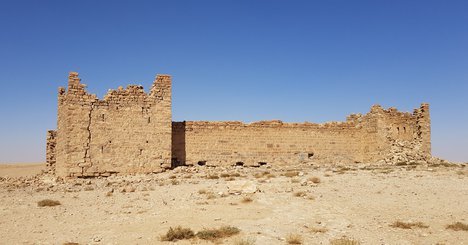
#Spy Satellite Photos Reveal Hundreds of Long-Lost Roman Forts#unknown Roman-era forts#iraq#syria#Roman Empire’s eastern border#ancient artifacts#archeology#archeolgst#history#history news#ancient history#ancient culture#ancient civilizations#roman history#roman empire#Qasr Bshi
49 notes
·
View notes
Text
NSFW TEXT WARNING

Yeah I'd jerk him off
#we were all thinking it#I was just the first to say it#hazbin hotel#sir pentious#joke#spy on me baby use satellite#Infrared see me move through the night#Aim#gonna fire shoot me right#I'm gonna like the way you fight#Now you found the secret code I use#To wash away my lonely blues#So i cant deny or lie cause your there#Only want to make me fly#Sex bomb#Sex bom#Youre a sex bomb#And you can give it to me when I need to come along#And baby you can turn me on#Hahaha
22 notes
·
View notes
Video
youtube
Rockwell C-1057 "Breadbox" Space Shuttle Concept
#youtube#looks like the attachment for a vacuum cleaner#was that Hubble or a spy satellite?#what if#realistic spacecraft
10 notes
·
View notes
Text
North Korean rocket carrying second spy satellite exploded shortly after launch
A rocket carrying North Korea’s second spy satellite exploded shortly after liftoff on Monday, state media reported.
Monday’s unsuccessful launch came hours after the leaders of South Korea, China and Japan met in Seoul for their first trilateral meeting in more than four years.
Moreover, the launch drew rebukes from neighbouring countries as the UN bans North Korea from taking any such action. The organisation sees them as a cover for testing long-range missile technology.
The North Korean Central News Agency reported the country had launched a spy satellite aboard a new rocket at its main northwest space centre. However, it exploded during first-stage flight shortly after liftoff due to a suspected engine malfunction.
The Japanese government issued a missile warning but lifted it later as the region was no longer at risk, Chief Cabinet Secretary Yoshimasa Hayashi stated. At the same time, Japanese Defence Minister Minoru Kihara called the launch “a serious challenge to the entire world.”
The US Indo-Pacific Command also criticised the move as a “brazen violation” of UN Security Council resolutions. At the same time, South Korea’s unification ministry called the satellite launch “a provocation that seriously threatens our and regional security.”
Read more HERE

0 notes
Text
Excellent use of old hardware.
9 notes
·
View notes
Text
Putin Using Nuclear Weapons in Space?
In the latest episode of “Lest We Forget-Historical,” host Lillian Cauldwell delves into the rumors surrounding Russian President Vladimir Putin’s alleged development of a nuclear anti-satellite weapon in space. According to CNN, this weapon, akin to an electromagnetic pulse (EMP), poses a significant threat to both government and commercial satellite operations for the United States and its…

View On WordPress
#1967 Space Treaty#CNN#Lillian Cauldwell#News#nuclear anti-satellite weapon#Nuclear Weapons#Russian President Vladimir Putin#Spy&039;s
2 notes
·
View notes
Text
Something About a Popular Doctor Who Episode That Confuses Me Slightly
The Waters of Mars. It's good and stuff.
Now, with that out of the, one of the things we're supposed to learn from 10's arc here is that the Doctor's companions keep him sane so he doesn't do shit like this.
But, "shit like this" is saving the lives of people who aren't supposed to be saved because something something Fixed Points Laws of Time etc. Most human companions can't really comprehend the importance of the Laws of Time, which with 60 years of show, are naturally really inconsistent.
So if, Donna, for example, was there with the Doctor on Mars in 2059, would she really have stopped him from saving people? She might've gotten onto him for taken like a god, but then the problem isn't that the Doctor changed history, just that he was really smug about it.
Honestly, I can't blame all the confusion on this one episode, since the Laws of Time change constantly.
In the very first season of the classic series, changing history is simply impossible. Things that are supposed to happen will happen. Barbara stops a human sacrifice, the victim is offended and offs himself anyway, everything goes on as it would've if she hadn't stopped the sacrifice.
The later Hartnell era had changing history be theoretically possible but you don't do it, because you just don't. It's against the rules. They don't go into the consequences. Anyone who tries to change history is stopped before they can change anything, so we don't what would happen if something was actually changed.
The rest of the classic series wasn't as interested in history in general as the Hartnell era. The Laws of Time and Not Changing History really only came up as a response to "Doctor, why can't we do the obvious and use our time machine to solve this problem?".
"Doctor, why can't we use our time machine to get Adric off the ship before it crashes?"
"We can't. It's against the rules. Shut up."
Then, along comes the new series and the first season decides to show the consequences of history being changed. Rose stops her dad from dying and we get the Reapers. So, if history is changed, it triggers the apocalypse and the Void Monsters will eat everything. A very good reason not to break the rules.
But then when the Doctor breaks the rules in The Waters of Mars, there are no Reapers. You might think it's because, when Adelaide figured out that she was supposed to die, she corrected the problem. But, the Doctor also saved two other people who were also meant to die and absolutely nothing happens.
A companion who has to take the Doctor's word for it that something is a fixed point and can't be changed, probably wouldn't stop him from changing his mind and changing it anyway, especially if they saw that there were no consequences.
The real reason the show can't change history is because the audience already knows how it goes. We know what happens to Pompeii. We know that the Aztecs kept doing human sacrifice after whatever time the TARDIS landed in. We know that the Great Fire of Rome will happen, so the Doctor accidentally inspiring it is no big deal.
The stories where the Doctor just shows up somewhere and overthrows the government take place on alien planets or in the audience's future. We don't know how the 22nd Century Dalek Invasion of Earth is supposed to play out. So, the Doctor and company can basically do whatever they want when they land there.
This is really funny when old episodes show their age and take place in what was then the future, but is now the past. The Enemy of the World explicitly takes place in 2018. From 2023, we know that 2018 didn't look like it did in The Enemy of the World. Doctor Who also knows that, since Ryan, Graham, and Yaz are all from 2018 and we meet them in 2018, which looks more like the real 2018, because it was written by people who knew what 2018 looked like.
But it makes you wonder: Is the 2018 the 13th Doctor fell into different from the 2018 the 2nd Doctor landed in because of the Doctor changing history? Did something happen during the UNIT era that changed the course of history so we ended up with the 2018 we got? And what would that mean for later on? Is the 22nd century Susan settled down in still the future of the 13th Doctor's 2018? If not, where did it go? Is Susan in a time or place that stopped existing?
So, simple rules: In a historical story, where the audience knows how history is supposed to go, or can learn it from a source other than a Doctor Who episode, you can't change events. But, in a sci-fi story, where everything is completely made up, we can do whatever we want.
And then The Waters of Mars happens in 2059. It's hard to say "we can't change history" to someone who is looking at the future. This wouldn't be history to Donna. It's not history to the audience. The idea that there's a specific way that this is supposed to go is something we have to take the show's word for. If the Doctor's actions change events in 2059, it has no effect on an audience watching in 2009 or 2023. By changing events and saving people, the Doctor is, from the audience's perspective, just doing his job.
So, we have to give a lot of credit for how the episode was written, acted, shot, scored, etc, that the audience can even believe that what the Doctor did was wrong. You have him use the Master's catchphrase, call himself something un-Doctorish like The Time Lord Victorious, call other people he's rescued "little people", and just generally sound power-mad and smug, and it feels like what he's doing is wrong, even if it doesn't seem quite as wrong when you give it any thought.
But still, would Donna Noble have prevented the Doctor from changing this fixed point in time? Probably not. Would she have gotten on to him for being smug about it? Definitely. So the line 10 crosses really isn't changing history. It's having a bad attitude about it.
#the waters of mars#tenth doctor#rambling about new who for a change#time lord victorious#why couldn't we have gotten the sexy spy 2018?#at least the evil politicians in that 2018 were cool#and they had passenger rockets#and weather satellites that could probably fix climate change#we got the shitty 2018
4 notes
·
View notes